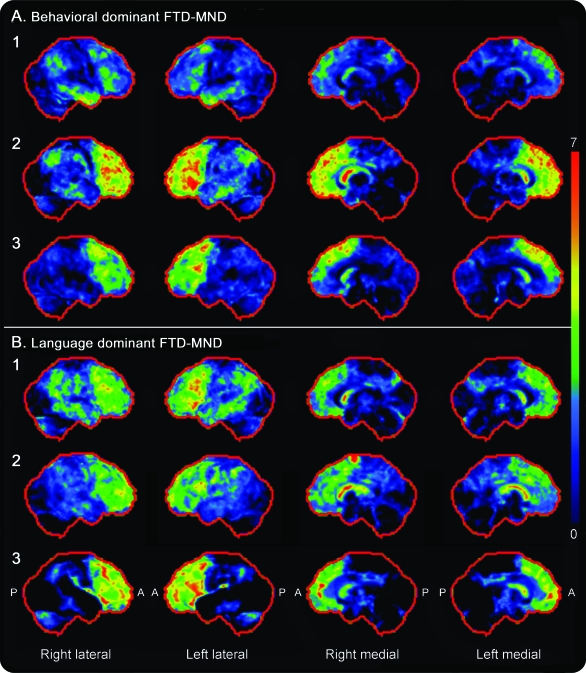Figure 1. Fluorodeoxyglucose (FDG)-PET statistical stereotactic surface projection maps (Cortex ID) showing hypometabolism in 3 patients with behavioral-dominant (A) and 3 patients with language-dominant frontotemporal dementia with motor neuron disease (FTD-MND) (B) compared with that in normal control subjects.
These specific patients are shown because they completed a FDG-PET scan after 2007 when use of Cortex ID was implemented. Variable degrees of frontal and temporal hypometabolism were observed in both groups, without any visually observable differences across groups. A = anterior; P = posterior.

